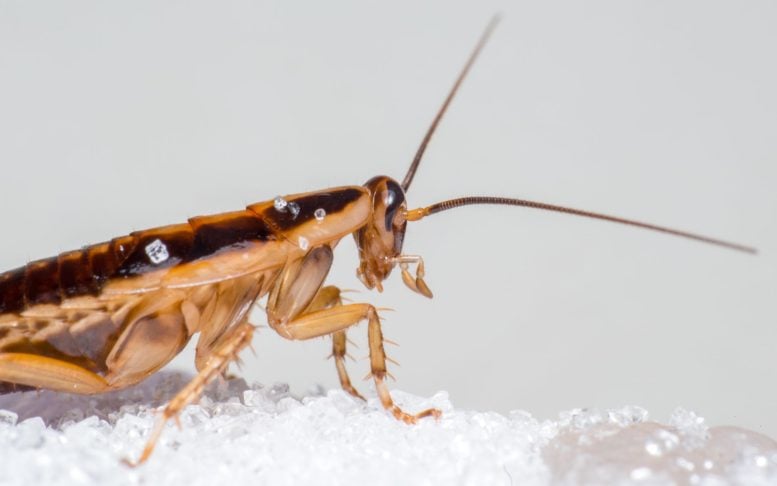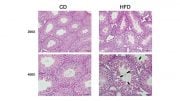
Researchers from Texas A&M AgriLife have traced the origins of the German cockroach, Blattella germanica, to Asia, revealing its evolutionary adaptation to human habitats. The study, published in the Proceedings of the National Academy of Sciences, highlights how these pests, reliant on human activity, have evolved over the last 2,100 years and become resistant to many insecticides.
An AgriLife Research study suggests that this pest has evolved thanks to human activities.
Research shows that the German cockroach, originating from Asia, adapted to live in human environments over 2,100 years ago and now heavily relies on human activities to spread globally, posing challenges in pest control due to its resistance to insecticides.
It turns out a common cockroach found across the globe is a pest of our own making.
In a study recently published in Proceedings of the National Academy of Sciences, Texas A&M AgriLife researchers unveiled insights into the origins of the common German cockroach, Blattella germanica.
The study included Edward Vargo, Ph.D., professor and endowed chair of urban entomology in the Texas A&M College of Agriculture and Life Sciences Department of Entomology.
Texas A&M AgriLife researchers, including Edward Vargo, Ph.D., have traced the German cockroach’s origins to Asia, revealing its evolutionary adaptation to human habitats, as detailed in their study recently published in the Proceedings of the National Academy of Sciences.
For centuries, the German cockroach has thrived in close proximity to human populations, infesting homes, apartment buildings, work offices, and other structures.
“Unlike many other pest species, which have natural populations in diverse habitats, German cockroaches have no known natural populations,” Vargo said. “They rely solely on human activity and manmade structures.”
Evolution That Spans Continents
For years, many scientists have wondered where these household pests originated and how they came to scurry across our kitchen floors.
This research study addressed these lingering questions by diving deep into the DNA of cockroaches from across six continents. Their analysis uncovered the evolution of this insect species and shed light on the German cockroach’s close association with human habitats.
While their name might indicate origins in Germany, that name came from a taxonomist presented with a specimen from Germany, but that is not considered their origin.
“Many people speculated over the years that the species’ origins came from Africa or Asia,” Vargo said. “It has been intriguing to find out that those who said Asia were right all along.”
The study provides a detailed genetic analysis that shows German cockroaches originated from the Asian cockroach approximately 2,100 years ago. Alongside this development, the cockroaches began to adapt to human-built environments, eventually leading to a dependence on living inside manmade structures.
These cockroaches are known for their small size, resilience, and ability to thrive indoors. In addition to their dependence on human-built structures, they have also relied on human transportation for dispersal. As civilizations and travel advanced, it turns out our crisscrossing the world included the German cockroach as a secret passenger.
“What is truly interesting here is how fairly recent that evolution occurred and how the German cockroach’s origin is related directly to its association with humans,” Vargo said.
Living Among Them
Understanding the origins and evolution of the German cockroach’s spread across the world is a crucial discovery for understanding the challenges these pests present. New infestations still occur through the transport of infested items like furniture, appliances, moving boxes, and travel bags.
The adaptability and resilience of this species have also led to a resistance to many different insecticides. Vargo said this reality enhances our understanding of what we might expect from this species in the future and prompts us to consider new and innovative ways to mitigate their presence in our daily lives.
“Understanding the German cockroach’s history and how quickly it adapted to human habitations and evolved is important because it relates to the pest control resistance of the species now,” Vargo said. “Knowing how they came to exist and thrive can help us better understand how the species might adapt and cause more issues worldwide.”
Reference: “Solving the 250-year-old mystery of the origin and global spread of the German cockroach, Blattella germanica” by Qian Tang, Edward L. Vargo, Intan Ahmad, Hong Jiang, Zuzana Kotyková Varadínová, Pilot Dovih, Dongmin Kim, Thomas Bourguignon, Warren Booth, Coby Schal, Dmitry V. Mukha, Frank E. Rheindt and Theodore A. Evans, 20 May 2024, Proceedings of the National Academy of Sciences.
DOI: 10.1073/pnas.2401185121









They’re also pretty smart; I spent some time in an ultra high security prison with lots of cockroaches; commissary was on Friday’s, some on Thursday’s they’d start getting really restless as though in anticipation of the crumbs that would be coming their way. Of course they may have been using a calendar, but I rather much highly doubt it. They also seem to have a complex social structure, possibly capable of relatively distant communication via their antennae ( inaudible sound frequencies for humans to detect, or more likely, as it seems to be able to pass through concrete walls; telepathy (go ahead laugh), but if so, it seems to operate as an open channel, as, judging from their movements some messages seem to need to occur face to face. Same as fish and birds they can coordinate their movements so as to evade harm; example, seeking a rental, the landlord showed me a unit with a dark brown floor, but as we stepped in, the little buggers revealed a white floor underneath them. No doubt, but after we kill all us off later this year the German Cockroach will inherit the world.
Ultra high security, and bugs can still get in… like in the film the 5th element, may I ask what did you do time for? Lol
Wireless communication between insects seems the norm, ant hives, be colonies… humans are not ready to be unplugged
If this species is dependent on humans, it won’t survive either–but I expect there won’t be a cosmocide.
We drifted from the timeline in which the US was nuked #Fallout tv show 😛
Curious; was the German Cockroach discovered by a taxonomist 250 years ago, and traced to an Asian species that arrived 2100 years before? Could it have been the Mongol Invasion of Europe that introduced these 800 years ago? It should be interesting to report in these science news journals how people in China have been producing farm-raised cockroaxhes for the health and longevity medicine industry; refined “cockroach essence” have shown promise in the beauty/youth-regeneration remedies as well as for burn-patients.